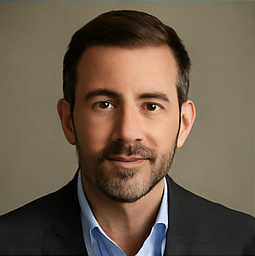The Political Aftermath of George Floyd's Death: A Deep Dive into BLM's Impact on the Democratic Party

The tragic events surrounding George Floyd’s death on May 25, 2020, when a Minneapolis police officer, Derek Chauvin, pressed his knee into Floyd's neck for over nine harrowing minutes, sent shockwaves across the world. This brutal act not only sparked outrage but also catalyzed a significant political shift in the United States that continues to be felt today. The haunting footage of Floyd pleading for his life became emblematic of systemic racism and police brutality, igniting the largest civil rights movement in American history. Millions of people worldwide took to the streets, turning Black Lives Matter (BLM) into a universal symbol of justice against racial injustice and tyranny.
In the wake of Floyd’s death, activists from cities far removed from the incident—such as Andheri in India and Amsterdam in the Netherlands—joined the movement, creating signs and murals in his memory. This global solidarity underscored a collective demand for change, with BLM emerging as a pivotal force in addressing America’s longstanding issues of racial inequality and police violence. Historically, America has had one of the highest incarceration rates in the world, and the movement served as a wake-up call to confront this dark legacy.
Although BLM had been founded in 2013, it gained unprecedented prominence in 2020, becoming a measure of political morality. Corporations and public figures alike publicly declared support for the movement, with sports teams and even politicians like Mitt Romney participating in protests. The surge in activism provided the Democratic Party with a unique opportunity to position itself as champions of progressive values, aiming to distance themselves from their historical ties to racism and oppression.
Yet, the movement was not without its controversies. The fervor around BLM led to the toppling and defacing of statues of historical figures, further polarizing public opinion. While murals memorializing George Floyd emerged globally, he was neither a revolutionary leader like Malcolm X nor an advocate for peaceful protest like Martin Luther King Jr. Instead, he was a man whose unfortunate circumstances turned him into a symbol—his tragic death becoming a catalyst for a movement that seemed to prioritize symbolism over substantive change.
In a period marked by knee-jerk activism, prominent Democrats, including Nancy Pelosi and Chuck Schumer, were seen kneeling in kente cloths to demonstrate their solidarity. However, the shift in political discourse raised alarms among some moderate voices within the party. Figures such as House Majority Whip James Clyburn cautioned that the movement's focus on radical slogans such as “defund the police” could have dire political consequences, echoing the chaotic sentiments of the 1960s Civil Rights Movement.
As the Democratic Party grappled with the ramifications of the BLM movement, internal controversies emerged, particularly concerning the Black Lives Matter Global Network Foundation. The organization raised approximately $90 million in 2020, but only a fraction of that was allocated to local chapters and charitable initiatives. Instead, significant portions went towards salaries, consulting fees, and real estate purchases, leading to allegations of self-enrichment. Co-founder Patrisse Cullors faced scrutiny after acquiring multiple properties, including a $6 million mansion in Los Angeles, which appeared to be more aligned with influencer culture than grassroots activism.
The fallout from these revelations was harsh, particularly among families of victims who felt exploited by the movement’s sudden rise to prominence. Tamika Palmer, Breonna Taylor’s mother, accused BLM of profiting from her daughter’s death, while Samaria Rice, mother of Tamir Rice, labeled the organization a “fraud.” Such criticisms resonated widely, complicating the narrative for Democrats who sought to rally around BLM as a beacon of hope and change.
As BLM became a rallying cry for progressive values, the Republican Party seized the opportunity to frame itself as the bastion of law and order. Their messaging effectively painted cities associated with BLM protests, such as San Francisco, Portland, and Chicago, as chaotic and lawless, regardless of the actual statistics indicating stable or declining crime rates. This framing culminated in a significant spending campaign in 2022, with over $50 million allocated to crime-related advertisements targeting BLM and its calls to defund the police.
During the 2022 election cycle, Marco Rubio’s re-election campaign exemplified the GOP’s strategy, leveraging BLM rhetoric to undermine his opponent, Val Demings, despite her background as a former police chief who criticized the idea of defunding the police. The Republican narrative cast Democrats as weak and beholden to radical elements, which resonated with many voters, especially those concerned about crime.
Despite initial gains for Democrats following Floyd’s death, the longer-term trend showed a backlash that significantly affected their support among various voter demographics. While Trump saw a temporary dip in popularity during the protests, by 2024, his support among young Black and Latino men had rebounded, and concerns over crime reached a two-decade high. Gallup polls indicated that over 63% of Americans viewed crime as a serious issue, a perception that the GOP capitalized on effectively.
The implications of BLM's rise extended to Kamala Harris’s 2024 campaign as well. Once perceived as a beacon of hope for a diverse America, her past associations with the movement and calls for criminal justice reform became points of contention. Voters questioned her commitment to the cause, and her campaign struggled to articulate a clear stance on BLM. This uncertainty played into Trump’s hands, who continually used BLM's legacy to frame the Democrats as disorganized and chaotic.
As we reflect on the cultural reckoning initiated by Floyd’s murder, it becomes evident that the BLM movement, rather than being an unambiguous force for change, also contributed to a growing cynicism among Americans. The unfortunate outcome has been that instead of inspiring dissent and activism, it has fostered a broader apathy towards dissent itself.


























